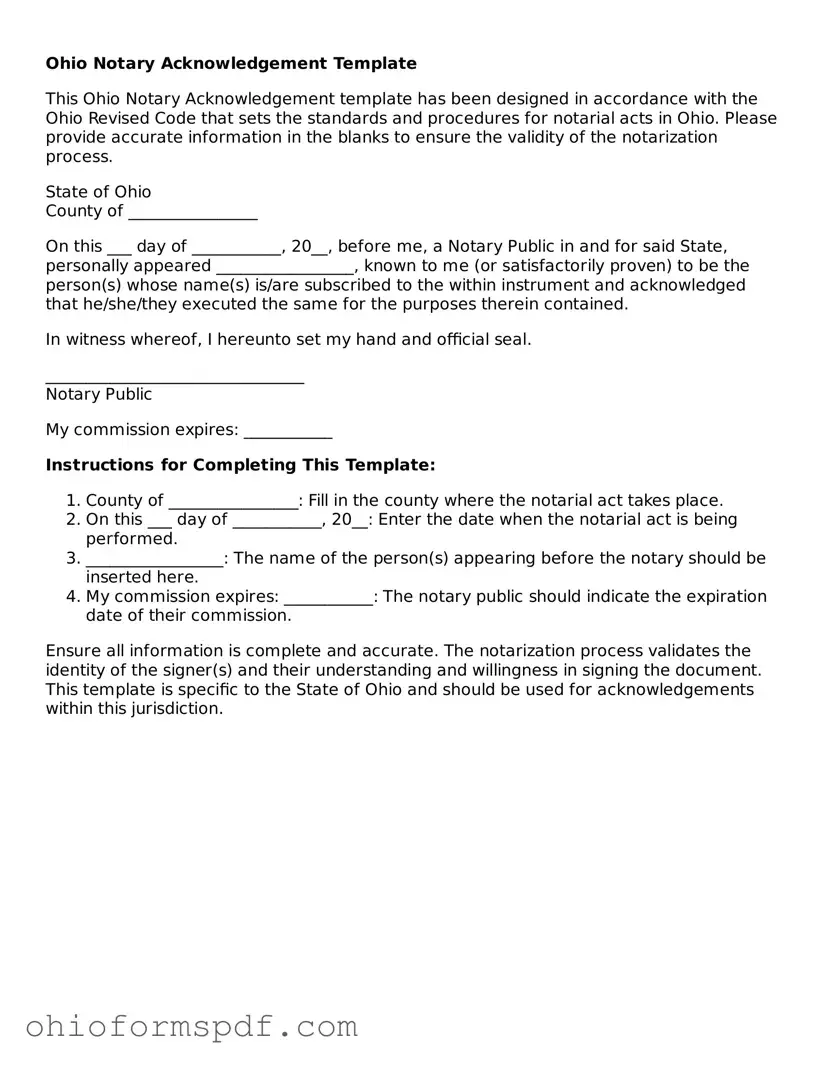What is an Ohio Notary Acknowledgement form?
An Ohio Notary Acknowledgment form is a legal document used to validate the identity of the signer of a document. It proves that the individual signing the document did so willingly and under their own free will. A notary public typically completes this process, adding their official stamp and signature to certify the acknowledgment.
Why do you need a Notary Acknowledgement in Ohio?
A Notary Acknowledgment in Ohio is often required for documents that are crucial and require formal authentication before they can be considered legally valid. This includes but is not limited to deeds, mortgages, powers of attorney, and estate planning documents. The acknowledgment ensures that the document is considered authentic and may be relied upon by third parties, such as financial institutions or government agencies.
How can I obtain a Notary Acknowledgment in Ohio?
To obtain a Notary Acknowledgment in Ohio, you must first ensure your document is complete, as a notary public cannot provide legal advice or assist in preparing your documents. Once your document is ready, contact a commissioned Ohio notary public; many can be found in banks, law offices, or available through mobile notary services. The notary will then verify your identity, witness your signature, and complete the acknowledgment form.
What forms of identification are needed to get a document notarized in Ohio?
To have a document notarized in Ohio, you must present valid, government-issued photo ID to the notary public. This could include a state-issued driver’s license, a passport, or a military ID. The identification must be current or issued within the last five years to be considered valid for proving your identity to the notary.
Is there a fee for notary services in Ohio?
Yes, in Ohio, notary publics are allowed to charge a fee for their services. The maximum fee that a notary can charge for acknowledgments, administering oaths, and other notarial acts is regulated by state law. It's recommended to inquire about the fee in advance to avoid any surprises. Additionally, some institutions may offer notary services for free or at a reduced cost to their clients.
What should I do if I need an Ohio Notary Acknowledgment but am currently out of state?
If you are currently out of state but require an Ohio Notary Acknowledgment, you have a couple of options. First, you can seek a notary public in your current location, as notaries in many states are authorized to perform notarial acts for documents that will be used in another state. Alternatively, you may use remote online notarization services, which are now legally recognized in Ohio. This allows a notary public to notarize documents electronically without the need for physical presence.
